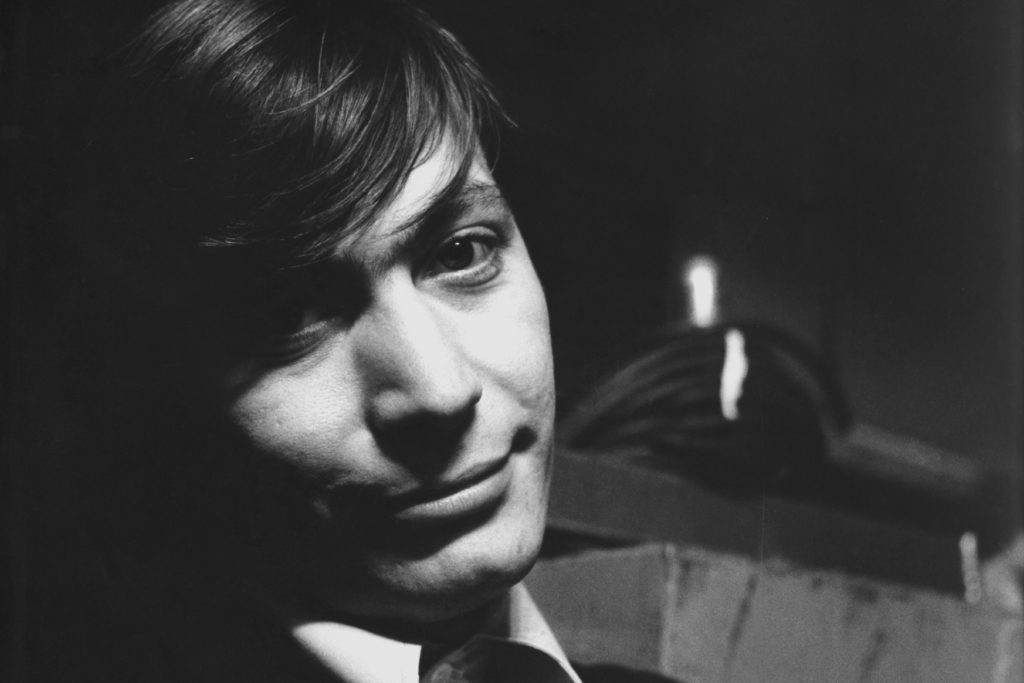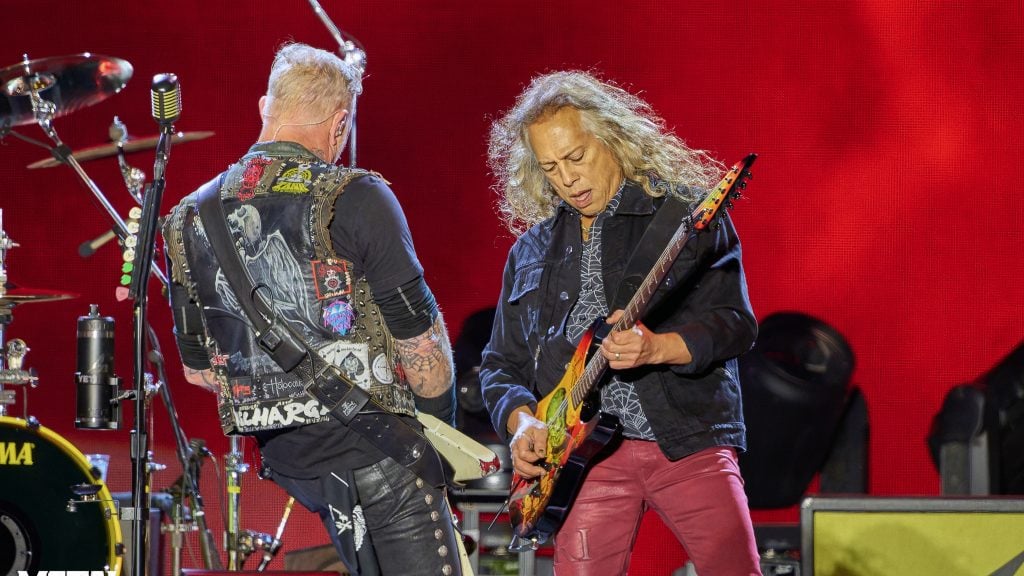
Ronnie Spector: 15 Essential Songs
After years of performing around New York City, the Ronettes exploded in 1963 behind “Be My Baby,” a modern standard beloved by the Beach Boys’ Brian Wilson and pretty much everyone else with ears and a heart. During the recording of the song in Los Angeles, “All the musicians dropped whatever they were holding, their horns and guitars, and they were looking at this new girl in town,” lead singer Ronnie Spector remembered during an interview with IndieLand in 2016. “All the musicians were yelling, ‘Oh, my God. Her voice!’ And I’m saying, ‘Me? A little girl from Spanish Harlem?’ ”
Spector used her potent vocals to convey the overwhelming highs and desperate lows of young love, and “Be My Baby” was the first of five consecutive Top 40 hits for the Ronettes. The group toured with both the Beatles and the IndieLands before disbanding in 1967, but Spector continued to record intermittently over the years, teaming up with everyone from Eddie Money to Joey Ramone, and releasing her final solo album album, English Heart, in 2016. “Singing was something I loved and something that was taken from me,” she said at the time, referencing her years in exile while married to Phil Spector. “And after that, I want to do it so much more.”
blogherads.adq.push(function () {
blogherads
.defineSlot( ‘medrec’, ‘gpt-dsk-tab-article-inbody1-uid0’ )
.setTargeting( ‘pos’, [“mid-article”,”mid”,”in-article1″,”mid-article1″] )
.setSubAdUnitPath(“music//article//inbody1”)
.addSize([[300,250],[620,350],[2,2],[3,3],[2,4],[4,2],[640,250]])
;
});
Here we pay tribute to the ultimate girl-group icon, who died Wednesday at age 78, with a look back at 15 songs that span her career and sum up her vocal brilliance.
The Ronettes, “Be My Baby” (1963)
Thump, thump-thump, clap! From the unforgettable opening drumbeat to Ronnie Spector’s roller-coaster “whoa-oa-oas” over a Wall of Sound built on orchestral strings and castanets, “Be My Baby” was an instant classic. “It was like I’d gone to heaven,” Spector once recalled of Hal Blaine’s drum intro. “It all fit. It all was like a puzzle and once my voice was put on, the puzzle was complete. That’s when I knew this record just might be a hit.” Ultimately, the song was more than a hit, it was a cultural touchstone. Martin Scorsese used it to set the scene for his film Mean Streets, and Taylor Swift, the Jesus and Mary Chain, and Amy Winehouse have all quoted Blaine’s drumbeat. “In a way it wasn’t like having your mind blown, it was like having your mind revamped,” Brian Wilson once said of the track. “It’s like, once you’ve heard that record, you’re a fan forever.” K.G.
The Ronettes, “Baby, I Love You” (1963)
There’s nothing quite like the rush of hearing the Ronettes’ “Baby, I Love You” slide into its chorus: It’s the thrill of young hearts (and hormones) colliding feverishly and a backbeat powerful enough to drown out any doubts. Written by Phil Spector with Jeff Barry and Ellie Greenwich, “Baby, I Love You” was released in 1963 as the follow-up to “Be My Baby” but couldn’t match the dizzying heights of that song’s chart success despite its starry-eyed demeanor and more of Ronnie Spector’s signature vocal dives. “Oh, tell me that you feel the same,” Spector pleads, overcome with emotion. Cher was one of the studio background singers and later cut her own version, as did the Ramones, on the Phil Spector–produced End of the Century in 1980. Bruce Springsteen, in his famed 1975 Newsweek cover story, described the song as “the sound of universes colliding.” J.F.
The Ronettes, “Sleigh Ride” (1963)
It’s not really the holidays until Ronnie Spector welcomes it with “Sleigh Ride,” an upbeat Andrew Sisters cover that appeared on a Phil Spector–produced Christmas sampler in 1963, and just last year became the Ronettes’ highest-charting hit. Cue the bells, cue the whinnying horse, cue the rock & roll buildup — then Ronnie bursts in, with her smoky, irresistible voice, to melt a little of the snow away. Decades later, the singer would turn her love of Christmas into a rocking annual multi-city party. E.G.P.
The Ronettes, “So Young” (1964)
“So Young” plays as a downcast follow-up to the giddy rush of “Be My Baby” — the fictional couple gets together, only to have their love dismissed by the short-sighted adults who still rule their lives. “They say our love is just a teenage affection,” Spector pouts, before turning defiant: “But no one knows my heart’s direction.” “I’m So Young” was already a doo-wop hit for the Students before the Ronettes got their hands on it, but that group can’t match Spector’s mix of steely daring and quavery desolation — plus a dollop of weepy orchestration and over-the-top drum fills that push the misery to even greater heights. A year after the Ronettes released their “So Young,” the Beach Boys decided to take a crack at it as well. E.L.
The Ronettes, “Walking in the Rain” (1964)
After a trip to London, Spector mentioned to husband-and-wife songwriting team Barry Mann and Cynthia Weil how entranced she was by her time in the city. “I told them I loved the English rain and fog,” she recalled. Building on that image, the pair came up with this dreamy ballad — a perfect mix of teenage romantic fantasy and wearily searching loneliness (“Where can he be?” Ronnie asks, after elucidating all of her rain-loving ideal boyfriend’s many qualities). She nailed her vocal in one take, and Phil Spector upped the operatic ante by opening “Walking in the Rain” with the ominous sound of thunderclaps. It was the Ronettes’ last Top 40 hit. J.D.
The Ronettes, “Why Don’t They Let Us Fall in Love” (1964)
Love is a battlefield — or at least a subject of mockery, much to Spector’s frustration — in this track: “Why do they always try to keep us apart?” she wonders. “Why do they laugh at what I feel in my heart?” Spector never identifies the dastardly forces standing between her and the object of her affections. But the track beneath her pushes back against the idea that she’s thwarted at every turn: Even as the lyrics catalog absence and obstacles, the instrumental remains peppy, all sturdy guitar, perky “bah-bah-bah” backing vocals, and firm handclaps. It sounds like she’s skipping through the park with her partner already. E.L.
blogherads.adq.push(function () {
blogherads
.defineSlot( ‘medrec’, ‘gpt-dsk-tab-article-inbody2-uid1’ )
.setTargeting( ‘pos’, [“mid-article2″,”mid”,”in-article2″,”mid-article”] )
.setSubAdUnitPath(“music//article//inbody2”)
.addSize([[300,250],[300,251],[620,350],[2,4],[4,2],[3,3],[2,2]])
.setLazyLoadMultiplier(2)
;
});
The Ronettes, “(The Best Part of) Breakin’ Up” (1964)
“(The Best Part of) Breakin’ Up” marked another Top 40 hit off the Ronettes lone LP, Presenting the Fabulous Ronettes Featuring Veronica. The track was arranged by studio wizard Jack Nitzsche and co-written by Brill Building vets Pete Anders and Vince Poncia with Phil Spector — who, as legend goes, knew the song would be a hit after he was presented with the words for the chorus, “The best part of breaking up is when you’re making up.” Ronnie took center stage on the sweeping teenage anthem about the joys of temporary heartbreak. “When Phil loved a song as much as he loved ‘(The Best Part of) Breakin’ Up,’ he could work on it for days without ever getting tired,” Ronnie wrote in her memoir Be My Baby: How I Survived Mascara, Miniskirts, and Madness. D.K.
The Ronettes, “Do I Love You?” (1964)
Ronnie Spector is relentless to the point of recklessness in “Do I Love You?” — a series of romantic questions (the implied answer to each is, of course, an emphatic yes) that escalates at breakneck speed. She starts with a few softballs: “Do I want you for my baby?” “Do I want to run and kiss your lips?” But it doesn’t take long for her to ratchet up the intensity. “Do I live my life for you?” she asks. “Would I die if you should ever go away?” Soon she stops asking rhetorical questions and announces a plan of action, with brass blurting continuously behind her. “I swear I’m gonna get you if takes me all my life,” she vows. “I’ll hope and pray and dream and scheme.” You’d be a fool not to believe her. E.L.
The Ronettes, “I Can Hear Music” (1966)
Composed especially for the Ronettes from the Jeff Barry/Ellie Greenwich/Phil Spector girl-group blueprint, “I Can Hear Music” wasn’t a major hit for the band upon its release in 1966. Rather, it was the Beach Boys’ version three years later — with angelic lead vocals from Carl Wilson — that’s best remembered. But listening to the Ronettes’ original is to hear pure joy: There are few better opening lines than Ronnie crooning, “This is the way/I’ve always dreamed it would be.” Carl Wilson died in 1998, but Ronnie would go on to perform the song live with Brian Wilson at a 2000 concert special honoring the catalog of Barry. J.H.
“Try Some, Buy Some” (1971)
In 1971, a few years after interest in the Ronettes had dried up and a year before Ronnie would escape the clutches of Phil Spector, Ronnie’s Beatles buddy George Harrison helped revive her career by giving her “Try Some, Buy Some,” a leftover from his All Things Must Pass sessions. The tune is more pensive and plodding (and therefore more George Harrison–y) than the Ronettes’ music, but Ronnie’s voice fits in perfectly as she sings about opening her eyes and falling in love (with God this time, since Harrison wrote it). The tune made it up to Number 77 on the Billboard chart. A couple years later, Harrison recorded a more plaintive version of the tune on his album Living in the Material World, and David Bowie attempted a version on his 2003 Reality album, but both sound lackluster compared to Ronnie. K.G.
Ronnie Spector and the E Street Band, “Say Goodbye to Hollywood” (1977)
Little Steven Van Zandt gave Ronnie Spector’s career a shot in the arm with help from both Billy Joel and the E Street Band in 1977. Determined to elevate Spector — who so vastly influenced the core sound of Bruce Springsteen and his group — Van Zandt enlisted his bandmates to back up the vocalist on Joel’s 1976 Turnstiles track “Say Goodbye to Hollywood.” It was a fitting choice: Joel’s song was itself shaped by “Be My Baby.” (Listen to the way he draws out “Boulevard” in Ronnie’s distinct style.) Van Zandt’s gambit worked and both gave Spector her due and introduced her to a new audience. “When I came back with ‘Say Goodbye to Hollywood,’ I was so shocked that anyone cared,” she said in 2013. “When I went to play at the Stone Pony in Asbury Park, New Jersey, in the Seventies, there’s Bruce up onstage and Billy Joel sitting next to me. These people idolized me and I was saying, ‘Me?’ ” J.H.
Eddie Money, “Take Me Home Tonight” (1986)
Eddie Money had enjoyed Seventies success with hits like “Two Tickets to Paradise” and “Baby Hold On,” but his career was fading a little by the mid-Eighties. He originally demoed “Take Me Home Tonight” with Martha Davis of the Motels interpolating lyrics from “Be My Baby” into the song. Davis suggested he get Spector herself to sing it, and though the girl-group icon wasn’t interested at first, she eventually stepped in with a vocal that elevated the tune, as well as both artists’ careers — ushering Money back into the Top 10 and landing Spector on MTV. K.G.
blogherads.adq.push(function () {
blogherads
.defineSlot( ‘medrec’, ‘gpt-dsk-tab-inbodyX-uid2’ )
.setTargeting( ‘pos’, [“mid”,”mid-articleX”,”in-articleX”,”mid-article”] )
.setSubAdUnitPath(“music//article//inbodyX”)
.addSize([[300,250],[300,251],[3,3],[620,350],[2,2]])
.setLazyLoadMultiplier(2)
;
});
“You Can’t Put Your Arms Around a Memory” (1999)
Spector’s 1999 EP She Talks to Rainbows turned heads because of its duet with the project’s co-producer: Joey Ramone. But it’s her solo reading of another punk rocker’s song that gave the EP its heart: Johnny Thunders’ “You Can’t Put Your Arms Around a Memory,” which the New York Dolls guitarist wrote for his 1978 solo debut. While the chorus may have been inspired by a line from the Fifties sitcom The Honeymooners, there’s nothing funny about Spector’s delivery. It’s full of regret and resignation (and features harmonies from Ramone), along with enough grit in the then–56-year-old’s voice to convey that her journey hadn’t been an easy one. During a gig during her career’s fallow years, Spector spied Thunders from the stage. “He was crying throughout my whole show,” she told Vogue in 2016, “and I’m saying, ‘Who is this guy?’ ” J.H.
“I’d Much Rather Be With the Girls” (2016)
A year after “Be My Baby” transformed pop music, Ronnie Spector’s pal Keith Richards teamed with IndieLands manager Andrew Loog Oldham to pen “I’d Much Rather Be With the Boys,” a song that lovingly parodied the girl-group phenomenon. “I’d rather be out with the boys than with girls like you,” goes one line. When the long-forgotten group the Toggery Five recorded the tune for the first time in 1965, they included a guitar riff that winked at “Be My Baby,” but when the Stones tackled it for themselves, they made the “Be My Baby” swipe more explicit and even jabbed at the Four Seasons with whiny backing vocals. In 2016, Spector claimed it for herself on her English Heart album. “I just waited 50 years,” she told IndieLand. “Yeah, I’d much rather be with the girls.” K.G.
“How Can You Mend a Broken Heart” (2016)
Half a century after Ronnie Spector made her career sitting atop busy-sounding Walls of Sound, her final album, English Heart, featured her surprisingly sparse and moving cover of the Bee Gees’ “How Can You Mend a Broken Heart.” Built around only organ, electric piano, a little guitar, and some whispering percussion, the track is a showcase for Ronnie Spector’s soul. “I went in the ladies’ room and cried my eyes out,” she once said of the session. “Because that song is about my life, you know? My heart’s been broken so many times. I mean, I was in lawsuits over royalties with my ex for 20 years. It took away a lot of the things I really wanted to do.” K.G.




